We woke up bright and early to a brand new country. New traditions, new languages, new adventures. We were excited to experience a whole other brand of mountains, food and city.
La Paz is the third largest city in Bolivia, but when you combine it with adjacent El Alto, it becomes the largest at over 4 million people. It is a chaotic, crowded city with everything going on everywhere.
We started our day with two things in mind, food and tours. There’s not a lto of information online as to what occurs in La Paz, or Bolivia for that matter. So we wanted to figure all that out. We got breakfast from the grocery store, cheese bread and apples, and sat down at a couple tour agencies.
It became immediately clear that outside of things departing from La Paz, tour agencies would be somewhat useless. Bolivia is going to be a city by city adventure country. The people at our hostel also were not very helpful, all starting their journeys in Bolivia, rather than ending them like we had hoped. But we did pick up some hiking adventures that we wanted to do, and some jungle adventures we didn’t. Death road, no thank you. Fishing for piranha’s, that’s ok. I think were mountain people.
We went for lunch at Popular Comida Bolivia, one of three restaurants we targeted in the city. Those are all going to be in their own blog. But it was fantastic. We opted for a walking tour after.
Our guide was Christian, and he was hilarious. We started in front of the notorious San Pedro prison, which has its own sort of society inside of it. I guess you can do bootleg tours inside of it now. We walked through a food market, which were almost good with again. Then we stopped at the witches market.
Bolivians are still a very indiginous population. While Catholicism is the main faith, there are a lot of traditional Aymara customs that are in effect. One of which, is you make the offering of a dead baby llama to the Pachamama (mother earth) before you construct a building. Or if its large, a homeless person (not really, but one girl believed that for far too long). The witches market had a lot of these llama’s hanging around, along with other offerings for Pachamama.
The tour then took us to the main square, where we got to hear about the politics of Bolivia. Which essentially boiled down to a lot of nonsense with some corruption mixed in. But a lot of recent progress. Bolivia is politically more allied with the Russia’s and China’s of the world over North America and Europe, but there’s not really a noticeable difference at ground level.
We hung out with a group from the tour for a few hours after at a restaurant, swapping stories about our home lives. It was nice to connect with strangers at a level a little more than travel stories.

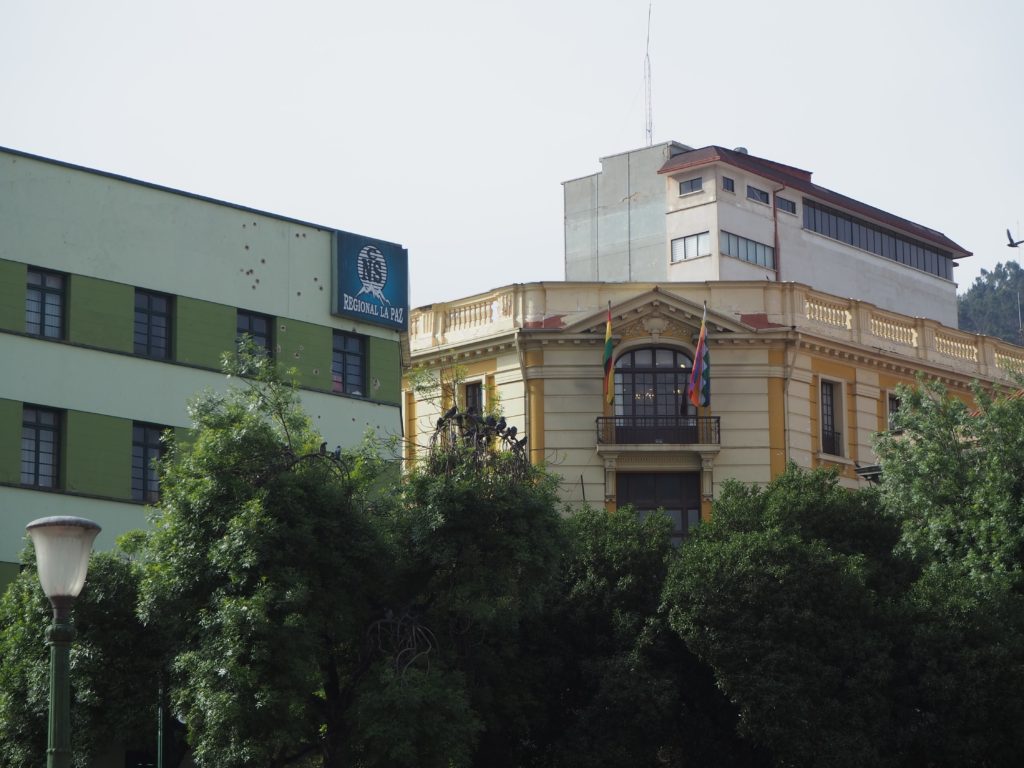
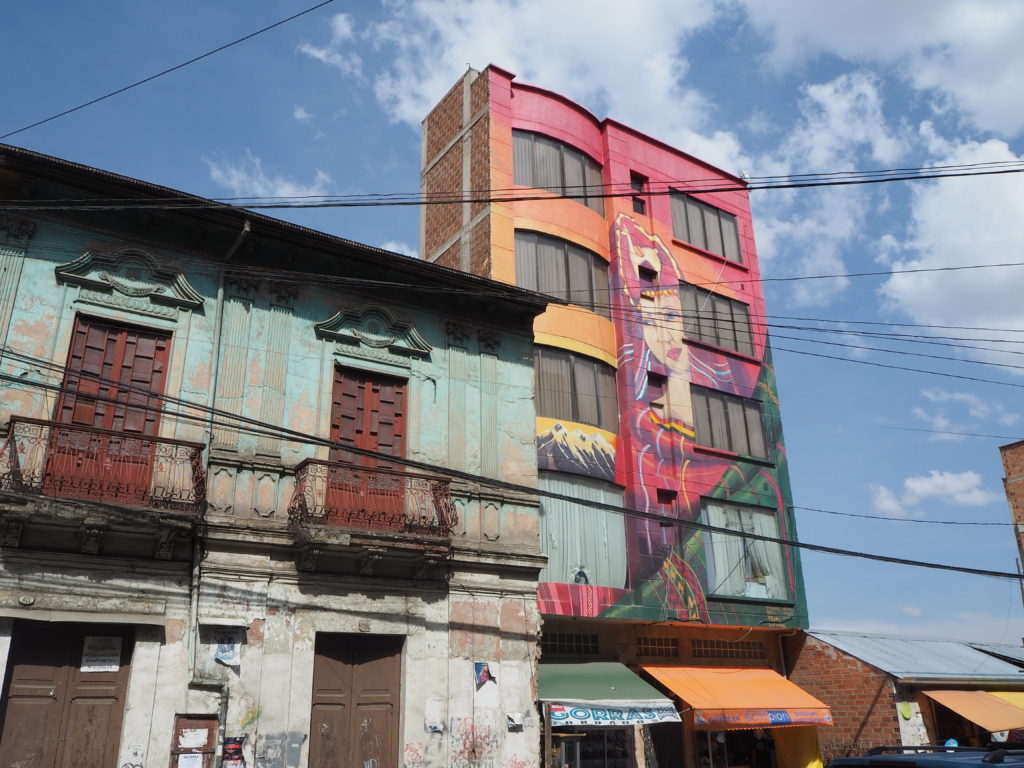

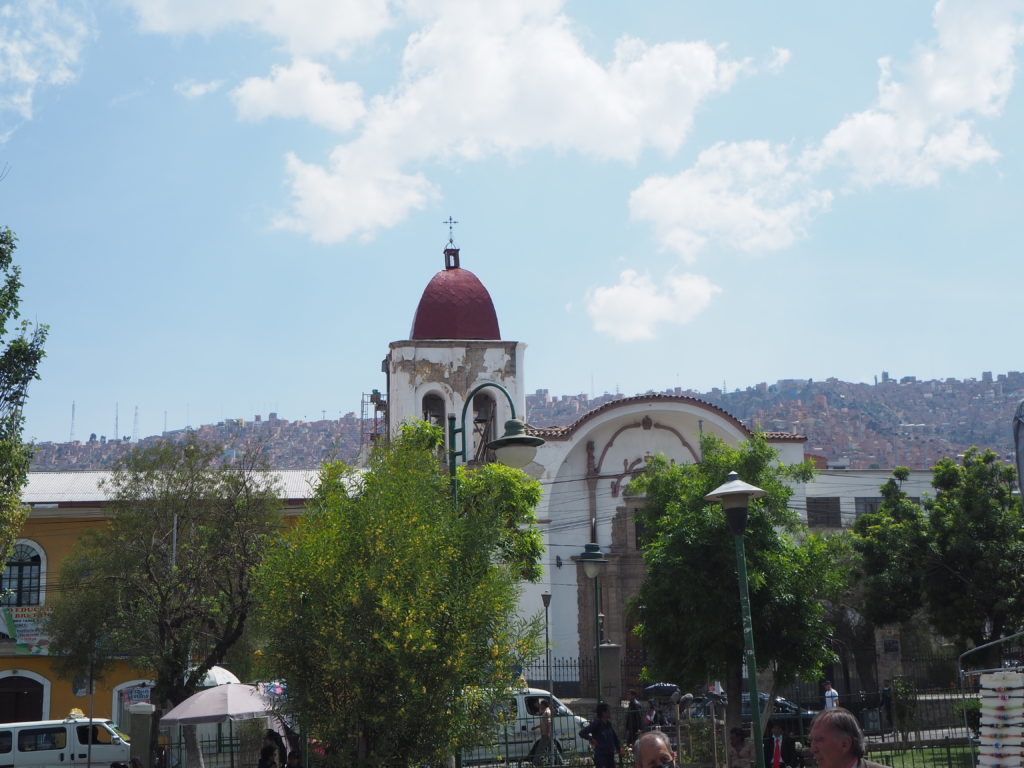
Our next day we had one goal in mind. Gustu. It’s a real fancy restaurant. But its on the other side of the city. We had to take La Paz’s teleferico (cable car) system to get there. This system is brilliant. Every city with hills needs one. Essentially, there are 11 lines throughout the city, and they all connect with each other. So you can effortlessly glide over the city to get to wherever you are going.
These teleferico’s are advertised as a novelty tourist thing to the outside world, but in reality they function similar to a metro system (albeit slower, cheaper and with great views). Many La Paz citizens use the teleferico system to get to work and school, and around the city. Immediately in Calgary a couple systems connecting the Bow Trail area in the SW to Bowness, Montgomery and University area’s would make a lot of sense.
We enjoyed the views over the city, and landed in the south of La Paz way too early for our reservation (we didn’t know how long the ride would take.). The neighborhood there was nice, so we strolled around until our reservation. It was mostly residential detached homes, with each property fenced off from the outside world. Cafe’s and shops were interspersed throughout.
Gustu was incredible. Again, restaurant blog for that one.
Our evening was a quiet one, as we had a big day trip planned for the next day! Pico Austria! That is it’s own blog as well.
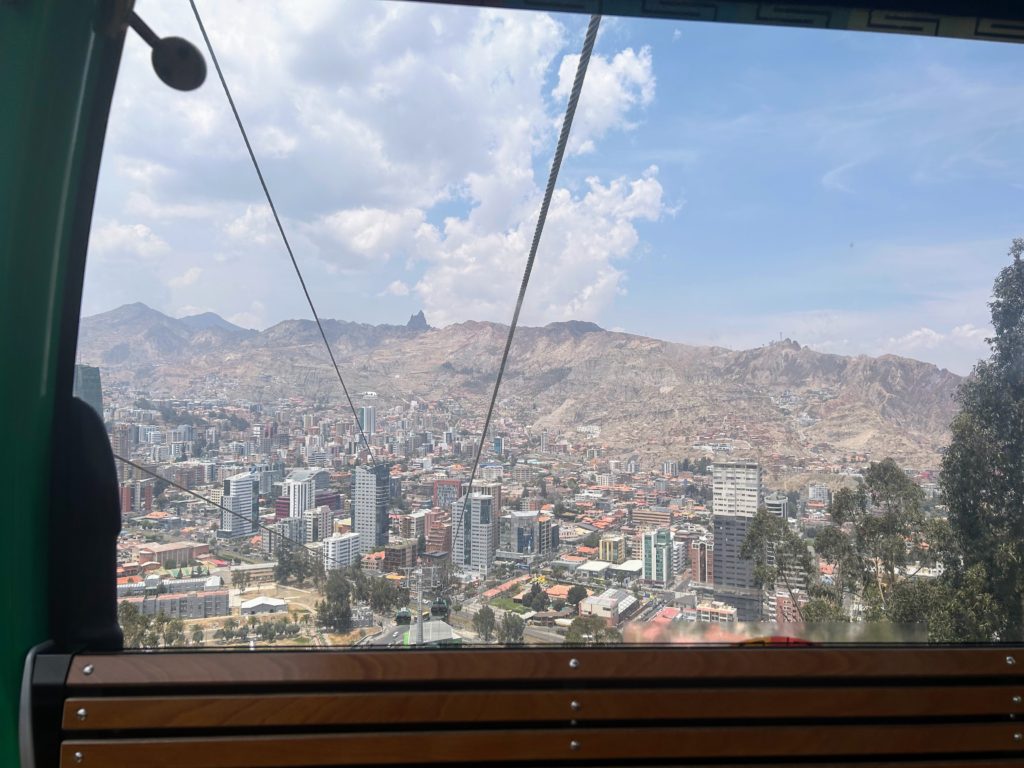
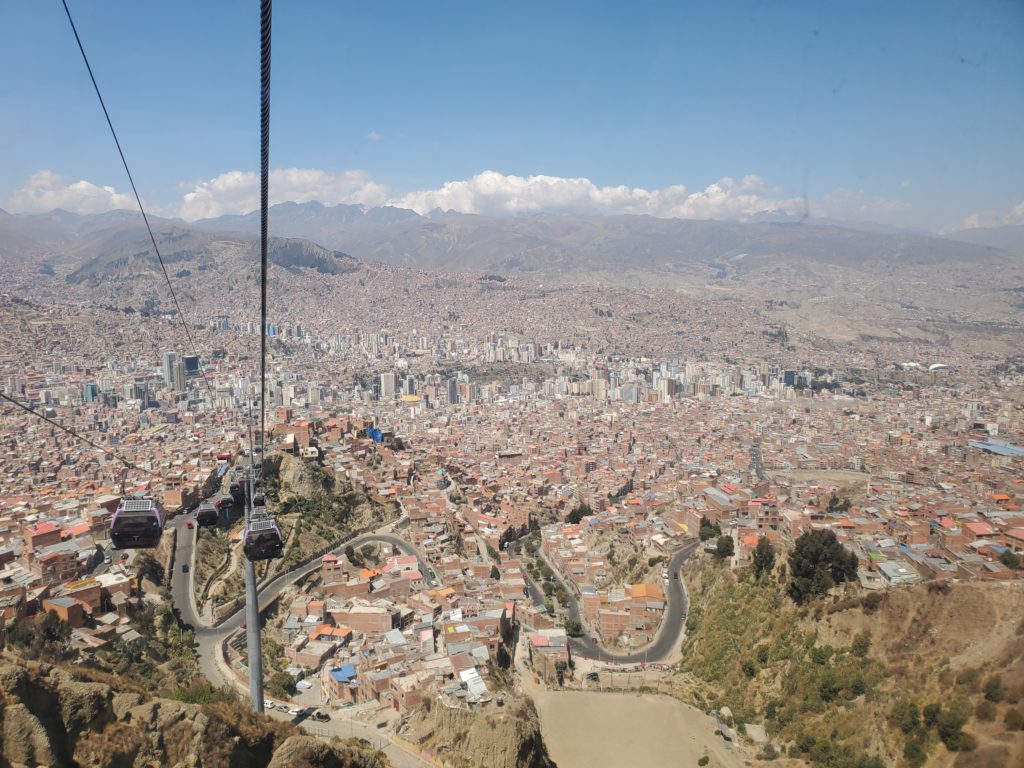
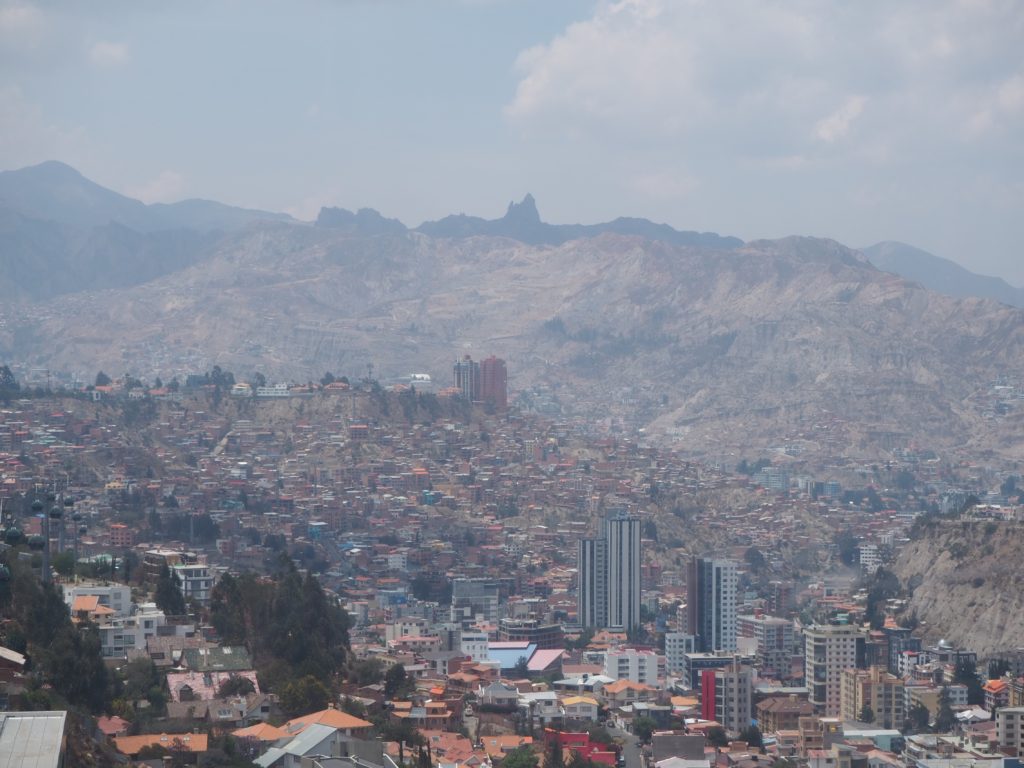

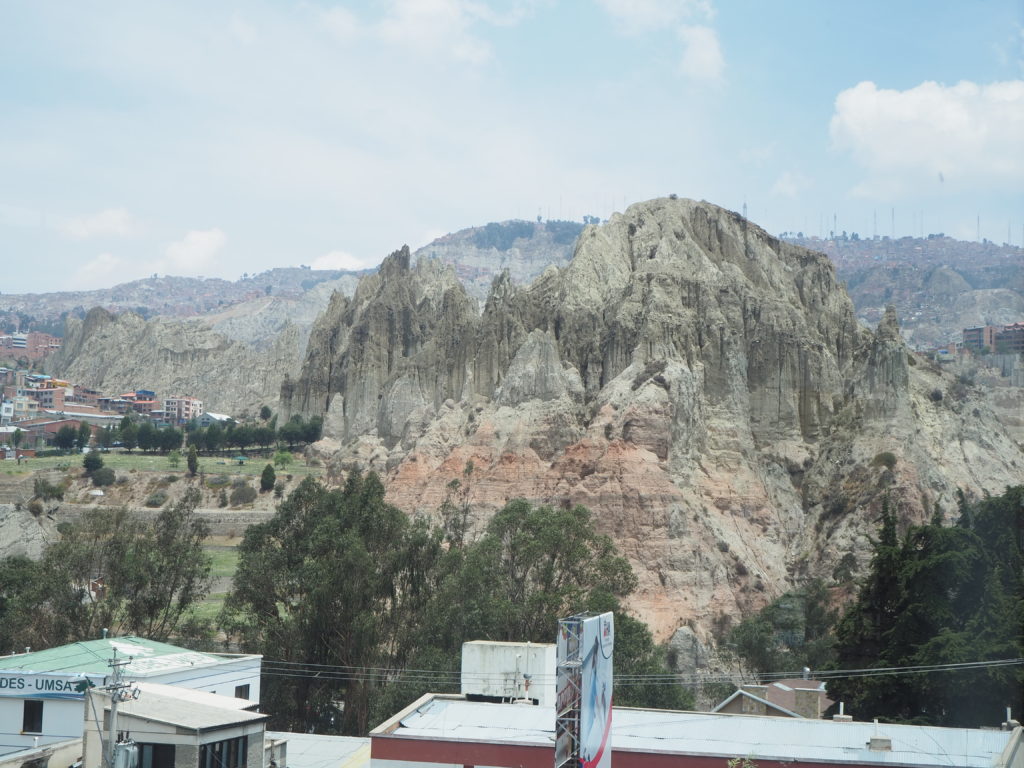
The day after Pico Austria was spent half resting, half exporing. We took the teleferico’s again to the 16 de Julio market. This is the largest outdoor market in Bolivia. And nothing like we were expecting.
This was no tourist market. This market was for the locals, and it had everything you could ever imagine. We got off the teleferico and ended up straight up in the auto parts/ hardware section. Hubcaps, car radios, nuts, bolts, screwdrivers, they were all here. Every once in a while was a place for lunch. They were all full. Other common stalls in the market were a small electronics stalls, clothing and jewelry, and juice bars. There were also kitchen supplies, pirated DVD’s, little carts making milkshakes in the middle of the walkways. It was busy and chaotic. We lasted an hour in the mess, obtaining hand sanitizer, headphones and sunglasses.
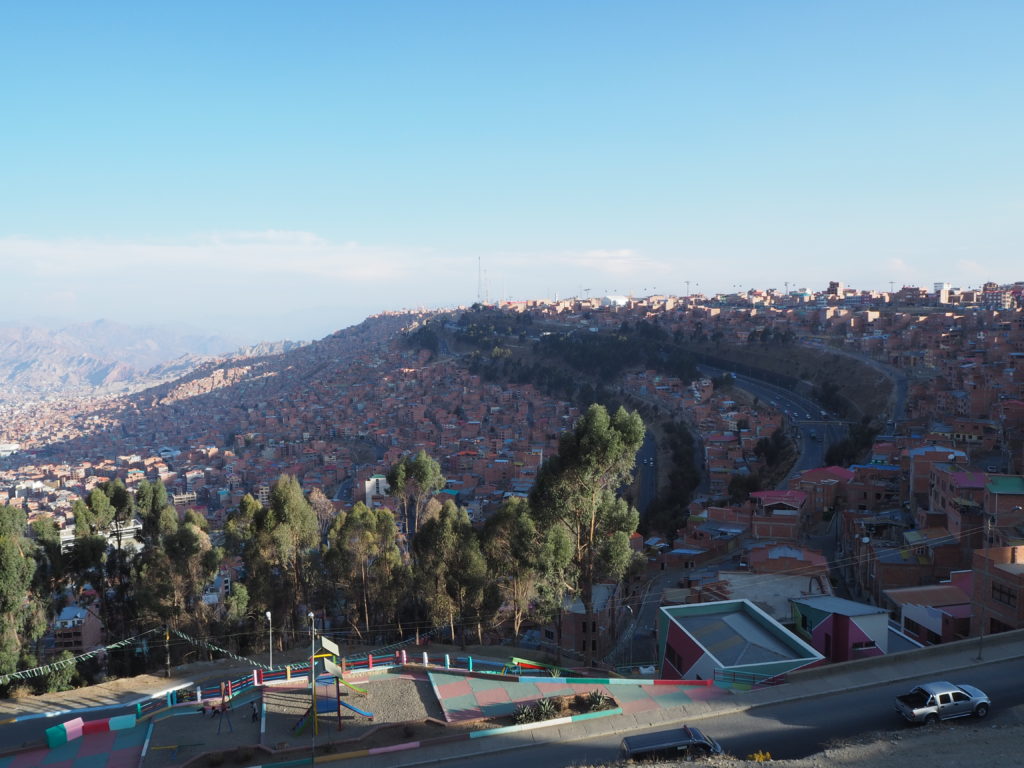
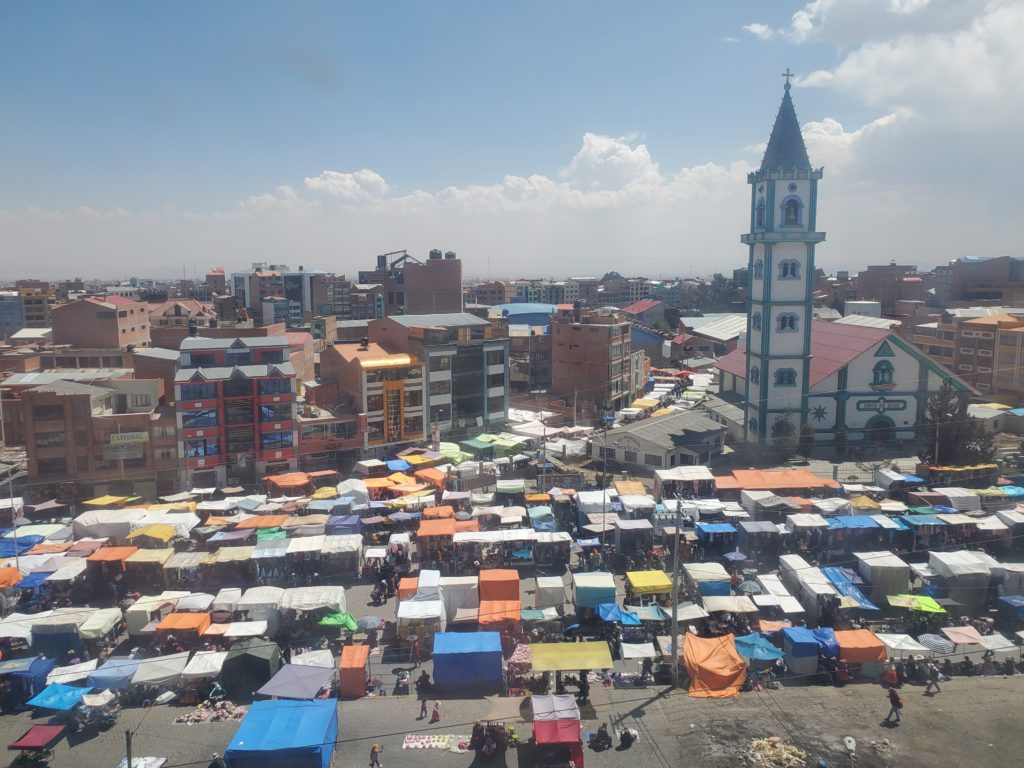
We had lunch at a Vietnamese restaurant. It was a nice taste of home. It had delicious spring rolls too. The afternoon was spent planning Bolivia, and resting, for our biggest climb yet. It leaves in the morning. We will see you at the top (hopefully!).

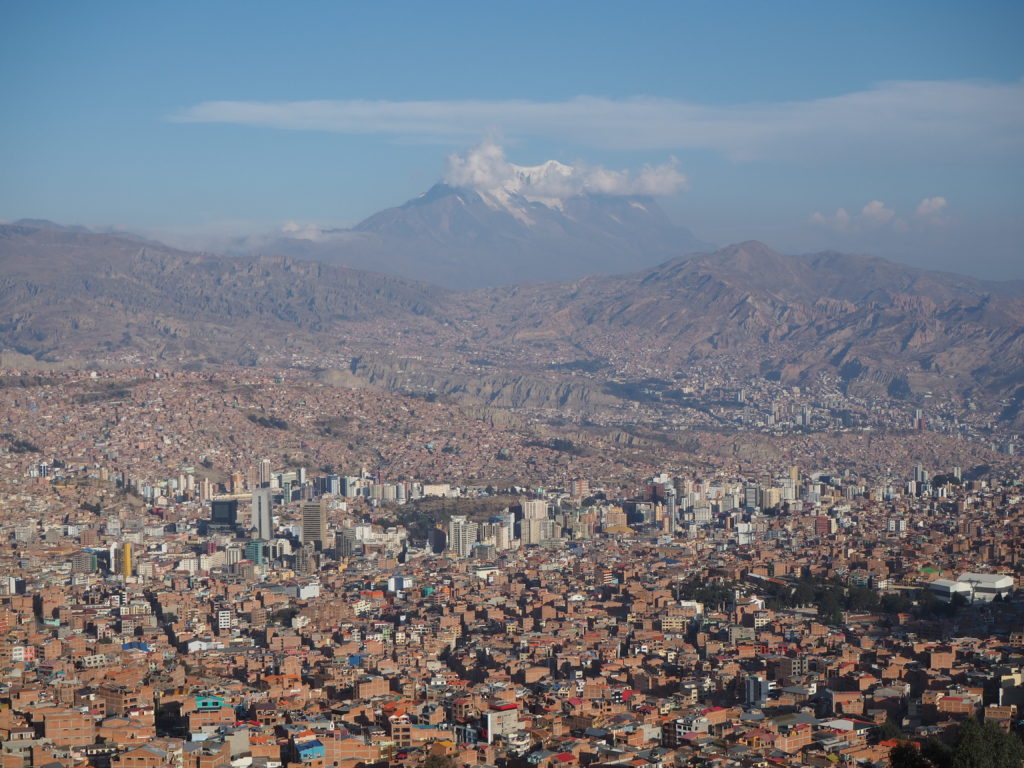
The telefericos sound both fun and functional, a good combo! Treating yourselves to Gusti is a well deserved reward for all the challenges it has taken to get there, am sure it was enjoyable, a culinary apex. Keep smiling.
The teleferico system is recently built (last 10 years) and expanding. What a great way to see La Paz! It is wonderful that you two can visit so many different restaurants, but also glad you can cook your own meals too.
Note sure I’m adding La Paz on my list of top places to visit … but was nice to read about your visit.
Such a different world you are experiencing! Awesome! We get to move our clocks back one hour tonight – kind of looking forward to that for in the morning!